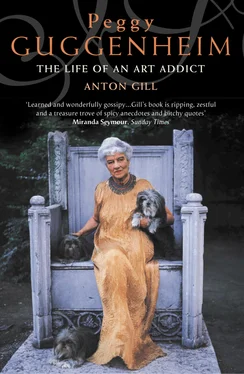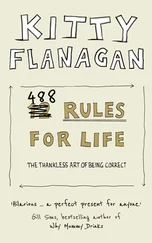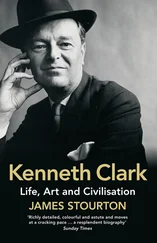1 ...7 8 9 11 12 13 ...34 The Seligmans were now solidly established. During the Civil War they sold uniforms to the Union Army, and took the risk of being paid in Treasury Bonds. It paid off, and when the war was over, with their old friend Grant a Yankee hero, they were able to cash in on the post-war boom. Although New York high society was riddled with elaborate rules and regulations, which tacitly excluded Jews from its inner sanctum, no one in business could afford to ignore them. By the mid-1860s the Seligman brothers and sisters had produced about eighty children between them. When Grant became president in 1869, he offered Joseph the post of Secretary to the Treasury. For the first time Joseph faltered. He may have been a millionaire at fifty, but at heart he was still an immigrant Jewish kid, and his confidence failed him. On his own turf, however, he remained king, and the linchpin of the clan’s business activities.
Although by no means on a par with the Astors, Morgans, Vanderbilts or Whitneys, the Seligmans continued to expand. They never had as big a break as the Guggenheims had in mining, but like them they diversified into railroads, and, famously, into the Panama Canal venture. After the builder of the Suez Canal, Ferdinand de Lesseps, failed to achieve the same success in Central America, the Seligmans were able not only to divert interest from a rival canal construction in Nicaragua, but to finance a revolution for Panamanian independence from Colombia in return for the canal contract.
The Guggenheims were always out-of-towners, and were thus less affected by the implicit anti-Semitism of New York society than the Seligmans were. As the Seligmans’ wealth increased, so did their desire to be accepted. Joseph had long since forgotten his father’s injunctions to be strictly observant of his faith, and he and his brothers wanted nothing more than to be accepted by the great and the good. Being Jewish and having a German accent didn’t help, no matter how much money one had, and however much one learned which knives and forks to use when and how to hold them properly, and the correct manner of presenting a calling card. As in the Great Plague of the Middle Ages, so in the temporary financial panic year of 1873, Jews were blamed.
Oddly enough, Sephardic Jews were more likely to be accepted. Moses Lazarus had been one of the founders of New York’s Knickerbocker Club, second in exclusivity only to the Union Club. His daughter Emma even wrote the verse that adorns the Statue of Liberty: ‘Give me your tired, your poor …’ For Ashkenazi Jews, especially those from Germany, it was a different matter. Just as in time they would look down on the Slav and Russian Jewish immigrants, so now they were the newcomers, and their financial acumen meant that they were the victims of envy and its attendant spite.
Still they longed to be accepted. Their synagogue, the Temple Emanu-El on 5th Avenue, was reformed and Americanised. But they also took pride in their old country. They founded their own exclusive clubs: until 1893 the Harmonie Gesellschaft hung a portrait of the Kaiser on its walls. And although the Seligmans had anglicised their first names, they wouldn’t touch their surname (except for dropping the second ‘n’). When William once suggested it, Joseph retorted that if he wanted to, he had better change his to schlemiel. By the late nineteenth century the Ashkenazi Jews of New York comprised a formidable group, including the Contents, the Goldmans, the Kuhns, the Lehmans, the Lewinsohns, the Loebs, the Sachses and the Schiffs. However, when it came to names for their children, Gentile and patriotic American ones were chosen. The thing to do for prominent Jews was to play down their Jewishness. But whatever they did, anti-Semitism remained a core element of society, and Jewish new arrivals found it impossible to avoid or ignore. That it rankled long with Joseph is proven by one dramatic incident.
The Grand Union Hotel in Saratoga had been owned by one Alexander T. Stewart. On his death in 1876 Stewart had left its management to a friend, Harry Hilton, who shared his right-wing views. Stewart had envied Joseph Seligman from the time that Seligman had turned down the Treasury post, which Stewart coveted. It hadn’t helped that Stewart’s subsequent application for the job had been rejected by the Senate.
The hotel had begun to lose money even before Stewart’s death, and Hilton and he believed this was because the Gentile clientele didn’t like the admission of Jews. It wasn’t uncommon for expensive hotels, clubs and even restaurants to refuse admission to Jews in those days, and Saratoga was a major resort for the wealthy. It isn’t clear whether the Seligman family actually went to the hotel in the summer of 1877, or whether they were forewarned: it seems highly unlikely that they would not have booked beforehand. It is possible that Joseph arrived with his family and his baggage in the knowledge that he would provoke a rejection. If so, the humiliation he received must have been half expected. Whatever the truth of the matter, they were rebuffed.
There was a storm in the press, and a furious exchange of letters. Seligman sued Hilton. The liberal elements in society took up Joseph’s cause. But Hilton stuck to his guns: he didn’t like Jews, and they were bad for business. The courts did not find in favour of Seligman, and several other hotels in the Adirondacks, emboldened by Hilton’s move, also introduced a ‘no-Jews’ policy. The only satisfaction Joseph could derive from the affair was the successful boycott of the largest New York department store, also formerly owned by Stewart and now managed by Hilton, which closed as a result. The effect of the case on Joseph was profound: he never recovered from it, perceiving it as the ultimate rejection by a society he had striven all his life to belong to, and into which he had put so much. He died at the end of March 1879, in his sixtieth year. A sad postscript is the resignation as late as 1893 by Jesse Seligman from the Union League Club, his favourite, which his brothers Joseph and William had also been involved in, when, extraordinarily, Jesse’s son Theodore was refused membership on anti-Semitic grounds. Like his older brother, Jesse found that New York was soured for him, and that he had never been truly accepted, even after forty-odd years in the city. He died a year later, leaving $30 million.
While Joseph had sought a wife back home in Germany, and married his cousin Babet, his younger brother James married into one of New York’s oldest and most established Jewish families. The Contents, originally of Dutch-German stock, had been in America since the late eighteenth century. To marry one of them was to gain an entrée into the best circles of Jewish New York society; but that society was small and closed. Despite wealth and respectability, the Jewish élite remained in an unofficial ghetto, without walls or other tangible demarcations to fence it off, but no less real for all that – and it may be that it was one which they did not choose to leave. A disinclination by Gentiles to marry into it was matched by a disinclination to marry out, and even if such a thing had been possible, it would have meant social anathema for the couple involved. The inevitable result was inbreeding. Cousins married cousins, and their children intermarried, so that within a couple of generations physical and psychological problems inevitably occurred.
The Contents looked down on just about everybody, although James was not the first German parvenu to marry one of them. On 4 December 1851, in the presence of Rabbis Isaacs and Merzbacher, he took the hand of Rosa Content. He was twenty-seven, and she was a slender, dark girl of seventeen. They hadn’t known each other long, and didn’t know each other well.
Читать дальше












